Feasibility of positive energy districts in China: research report by the China Academy of Building Research
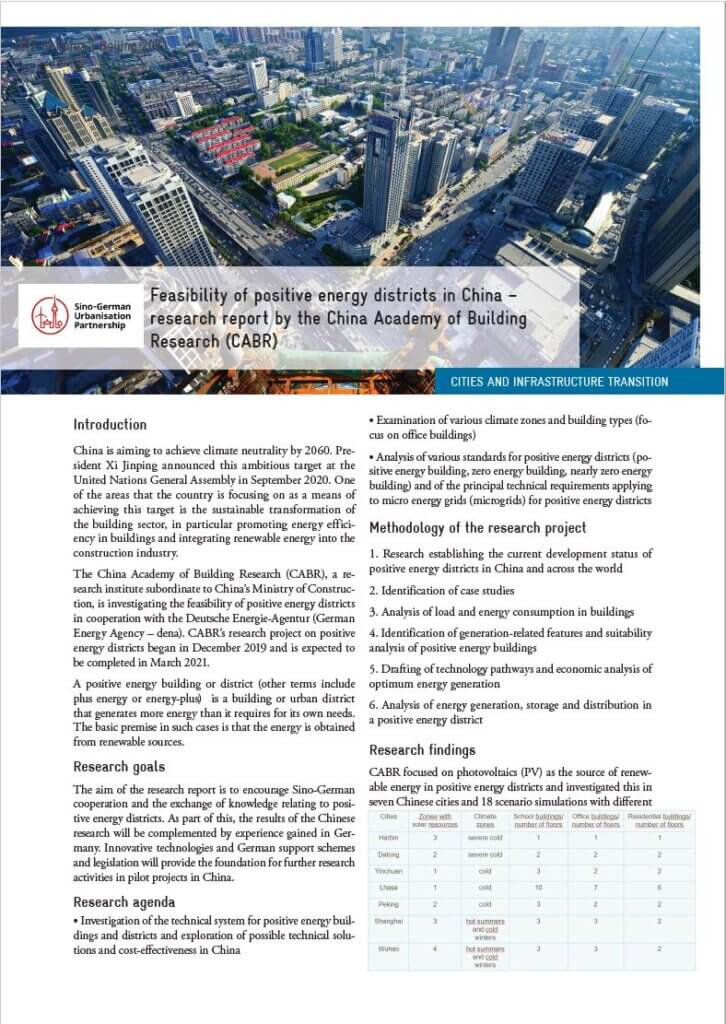
China is aiming to achieve climate neutrality by 2060. President Xi Jinping announced this ambitious target at the United Nations General Assembly in September 2020. One of the areas that the country is focusing on as a means of achieving this target is the sustainable transformation of the building sector, in particular promoting energy efficiency […]
The urban energy transition in China and Germany: selected best practices
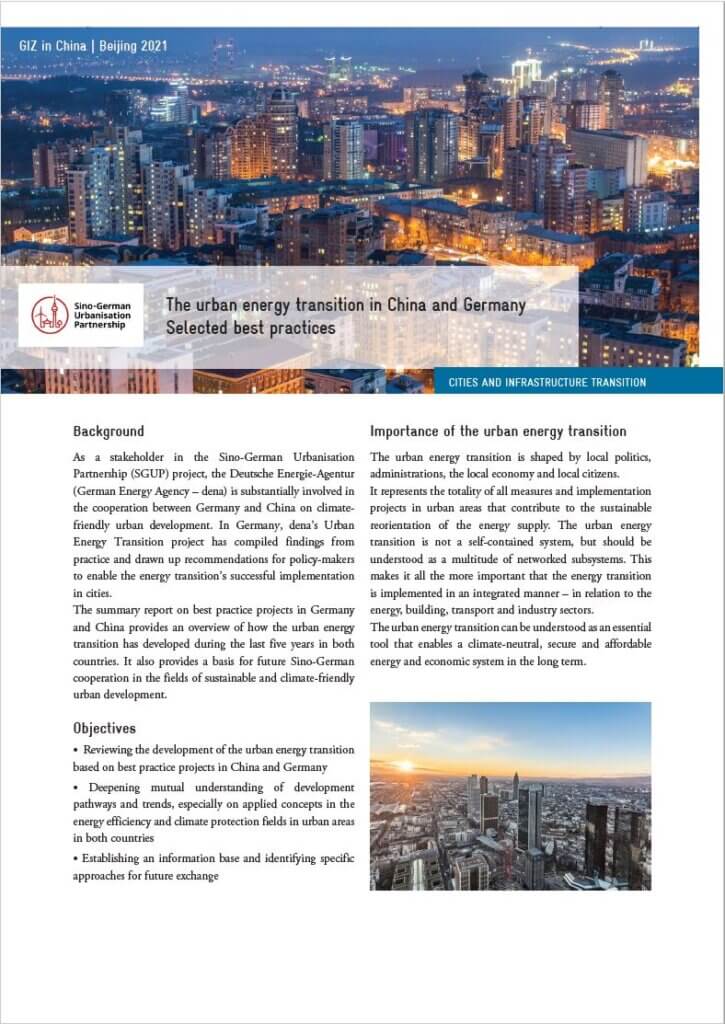
As a stakeholder in the Sino-German Urbanisation Partnership (SGUP) project, the Deutsche Energie-Agentur (German Energy Agency – dena) is substantially involved in the cooperation between Germany and China on climate-friendly urban development. In Germany, dena’s Urban Energy Transition project has compiled findings from practice and drawn up recommendations for policy-makers to enable the energy transition’s […]
Building-integrated photovoltaics (BIPV) in China and Germany
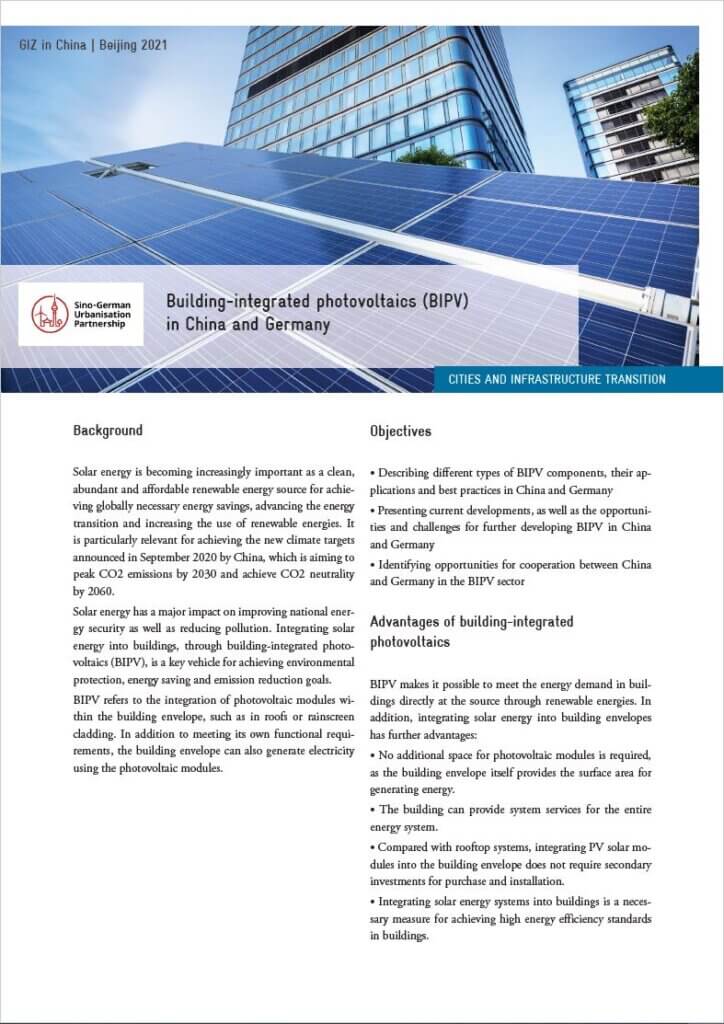
Solar energy is becoming increasingly important as a clean, abundant and affordable renewable energy source for achieving globally necessary energy savings, advancing the energy transition and increasing the use of renewable energies. It is particularly relevant for achieving the new climate targets announced in September 2020 by China, which is aiming to peak CO2 emissions […]
Integrating the Value of Biodiversity and Ecosystem Services into Urban Policy in China and Germany
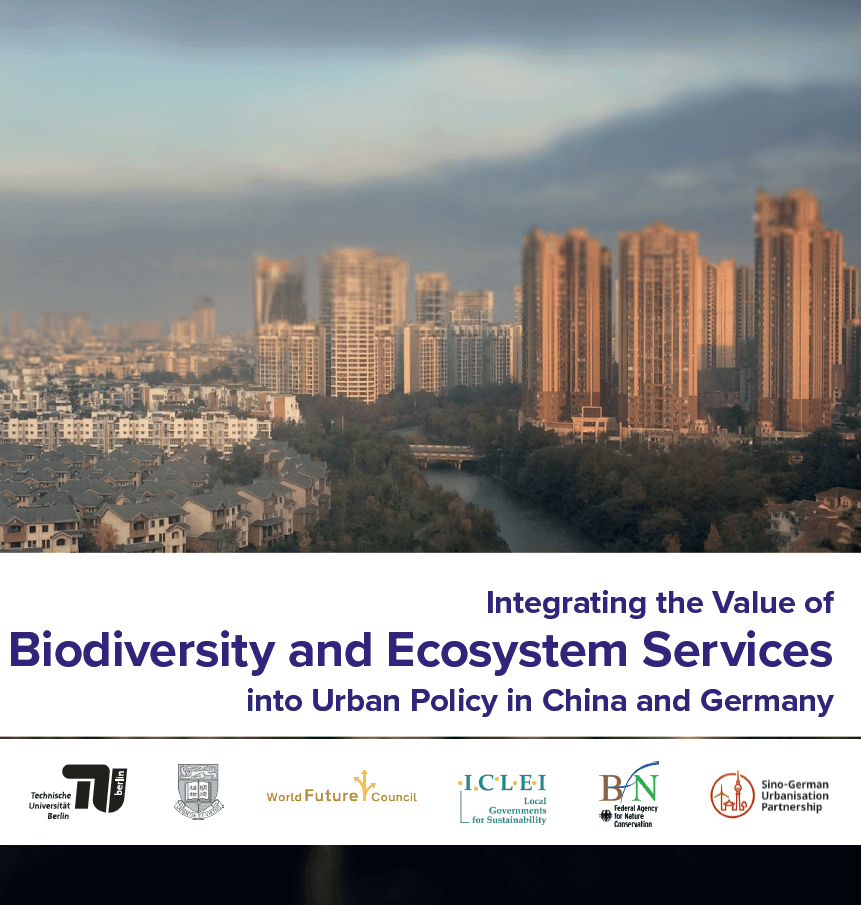
Carbon Footprint of the Water Sector
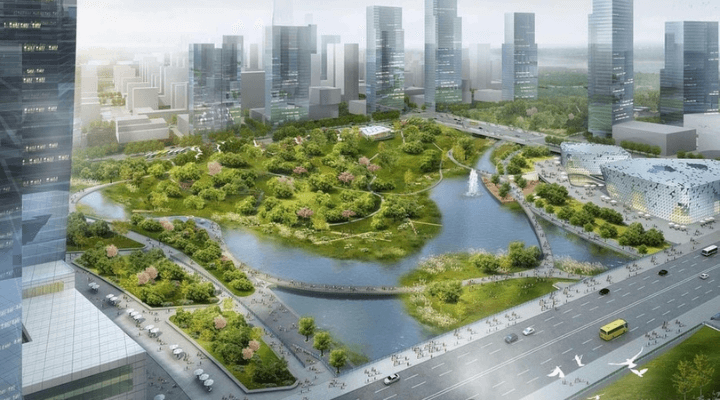
China and EU have set ambitious targets for achieving energy efficiency and carbon neutrality. The Water Sector must contribute. How to reduce the sector’s carbon footprint? Which solutions are available for energy efficient water resources provision? How to ensure net-energy producing wastewater treatment plants? How to reduce NO-emissions for WWTPs? How to integrate wastewater treatment […]
40 Years Sino-German Mayors’ Program - An interview with Dr. Jürgen Steiger

Platforms for exchange and close cooperation are key tools on the cities’ path towards sustainable urban development. The annual two-week long Mayors’ Study-Tour Program facilitates such a knowledge exchange on sustainable city making between China and Germany. In 2022, the Mayors’ Programme celebrates its 40th anniversary.
The Current Development of Bicycle Systems in Chinese Cities
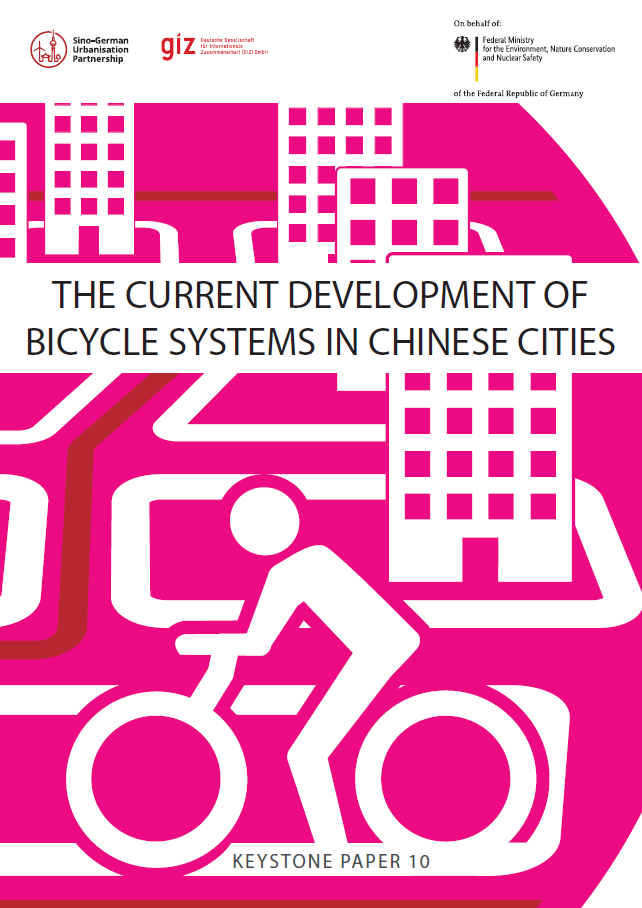
This document is part of ten Keystone Papers looking at current emerging topics in the building and city sector, focusing on energy efficiency and resilience. The Keystone Papers were developed within the framework of the Sino-German Urbanisation Partnership as a basis for its working topics.
Transformative City
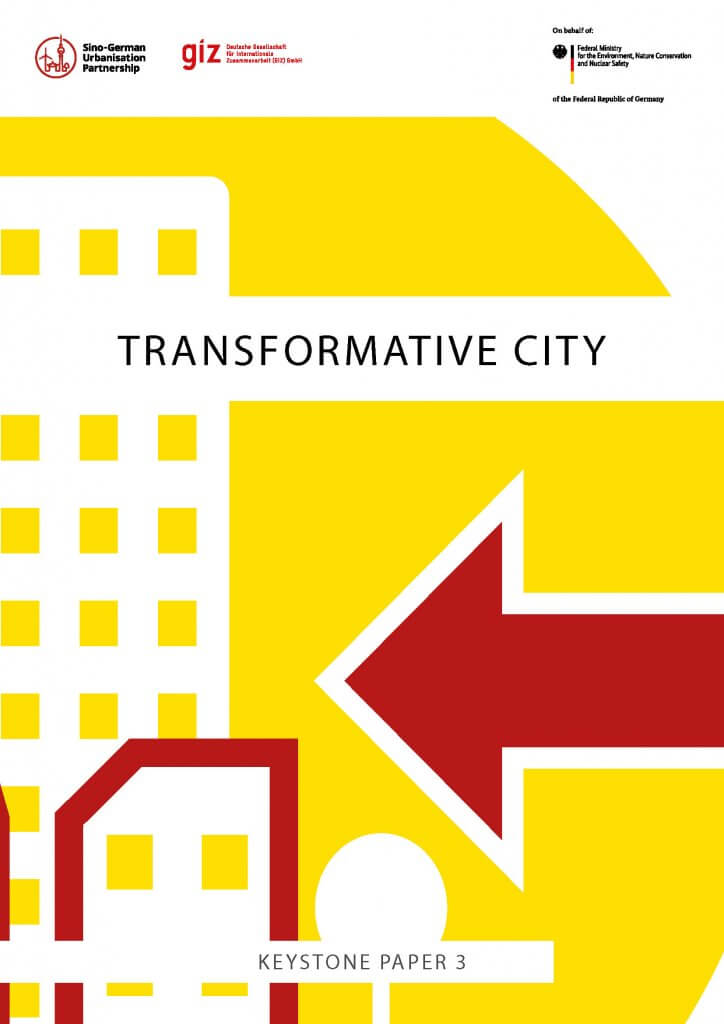
Cities are shaped by continuous urbanisation, increasing or shrinking population numbers, as well as other demographic changes. Cities are important economic drivers, and also responsible for a large proportion of ecological impacts and emissions. Physical transformation in urban environments mainly occurs in form of renewal, rehabilitation and upgrading. Germany’s Federal government offers a number of subsidy programmes, with many of them targeting inner city neighbourhoods, the improvement of existing structures, renovation of existing buildings and blocks, as well as the enhancement of green infrastructure and public spaces.
A study under the Sino-German Urbanisation Partnership: Cycling (systems) in Germany and Europe
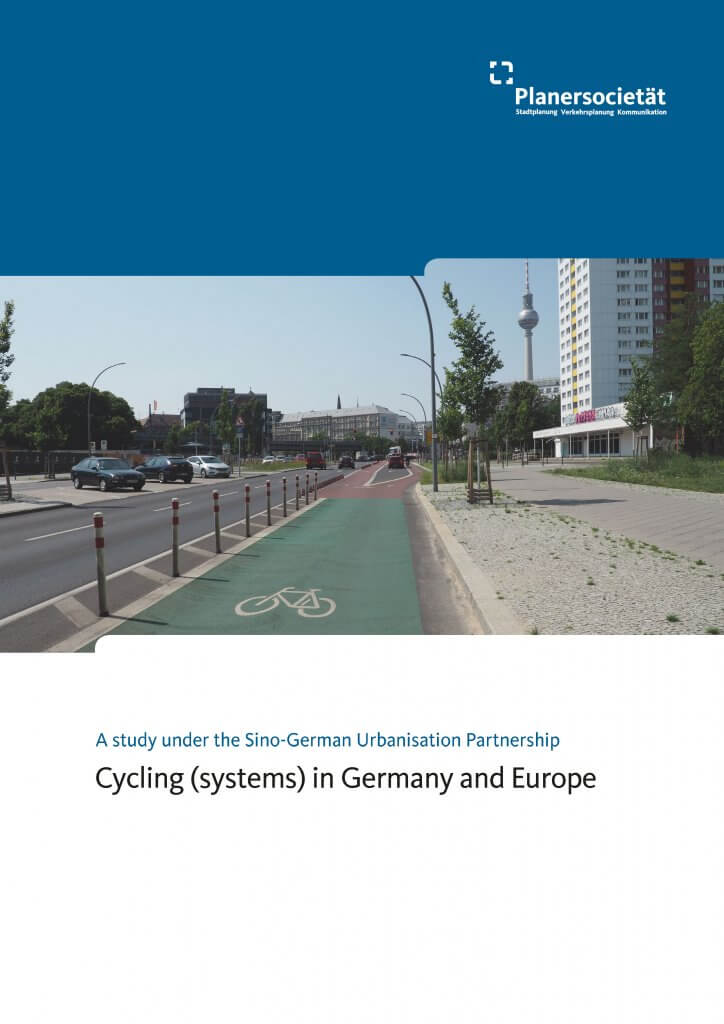
While motorized transport has been the dominant consignee of transport planning for decades, the understanding of planning and the public interest have changed increasingly in recent years. “Fewer people accept […] that the car has such prominence in the cityscape.” In Europe, the bike is increasingly establishing itself as a climate-friendly means of transport, also on the ways of daily traffic.
CLIMATE RISK MANAGEMENT IN CITIES
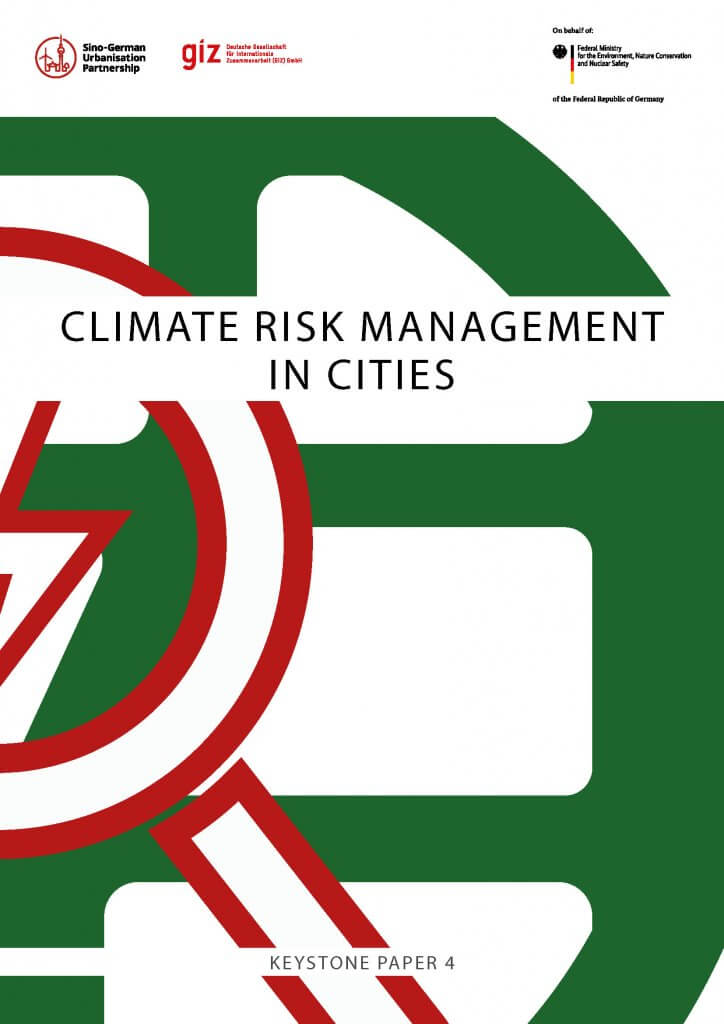
Globally, cities account for about 70 % of global greenhouse gas (GHG) emissions. Also in Germany, cities are emitting a large proportion of the country’s carbon footprint, while being especially prone to be affected by the impacts of climate change. In urban environments, increased frequency of extreme weather events, including storms, flooding or heat waves, can have severe physical, economic and social impacts. To create climate resilient cities, therefore, municipalities need to follow a two-legged approach, taking both mitigation and adaptation measures into account.

